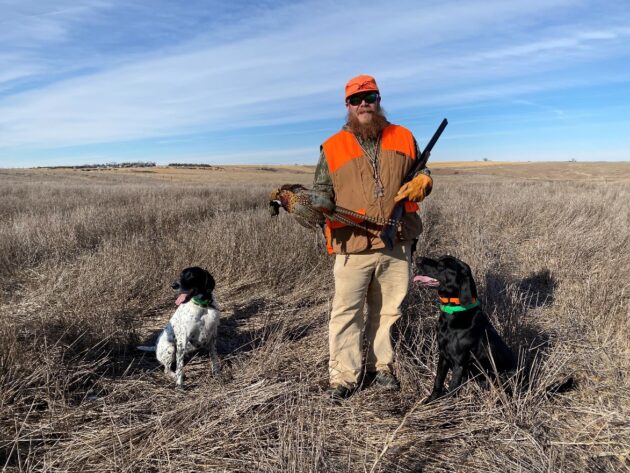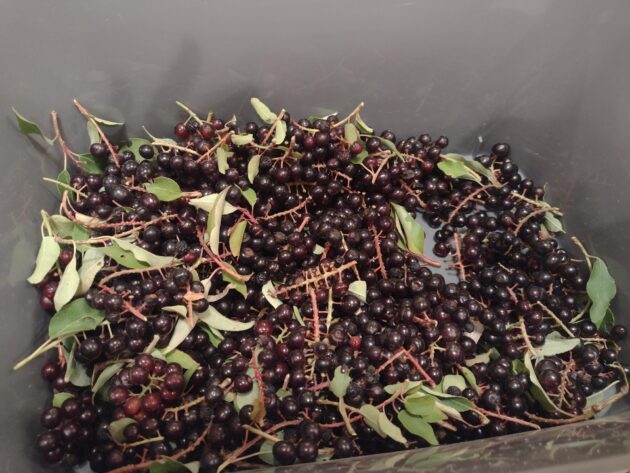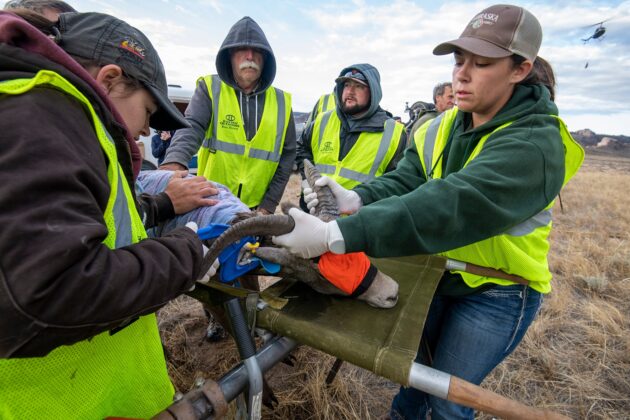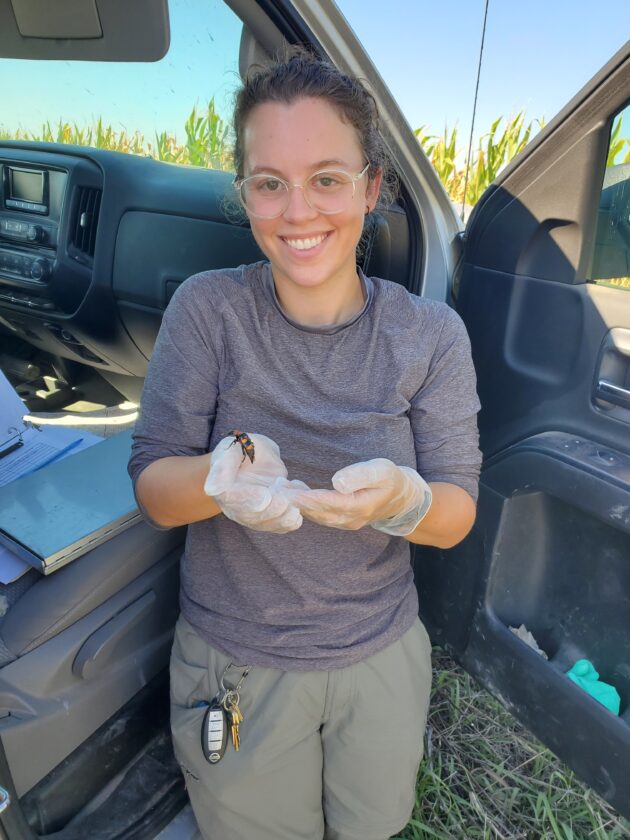If you build it, they will come… beavers that is!

Staff from an array of conservation organizations as well as local landowners, gathered in early November to build beaver dams in a Sandhills stream. Yes, you heard that right, people built beaver dams. We used fallen logs and branches from hardwoods as well as pickup loads of cedar branches to make the in-stream structures. Wooden posts were hammered into the stream bed to hold our creations in place, ready for the beavers to perfect.
Beavers are considered by some a nuisance or pest because of the way they pond water, decrease the downstream flow, and constantly take down trees. However, beavers are actually very important for the landscape and a watershed as a whole! They help us manage drought, flooding, and water quality:
- Beavers create or improve wetlands which in turn creates habitat for other species of fish, mammals, waterfowl, songbirds, amphibians, and insects.
- Beavers increase the biodiversity of a landscape by expanding riparian, or streamside, habitat as wetlands form. Different vegetation will spread into the newly created habitats increasing plant diversity, as well as fish, invertebrates, and other wildlife.
- Beavers improve water quality. Dams and ponds reduce soil erosion and retain stream sediment which filters pollutants like heavy metals, pesticides, and fertilizers. This improves the water quality downstream which is used by humans, livestock, and wildlife.
- Beavers can help lessen the effects of drought by storing water on the surface as it allows water to absorb into the sub-surface; this happens because of the impoundment of water by their dams. This can increase a stream’s flow in periods of drought, making ecosystems less vulnerable during dry periods.
- Beavers help minimize flood risk by slowing down the flow of water which can delay and reduce flooding further downstream.
Human-made in-stream woody debris structures are known Beaver Dam Analogs and Post-Assisted Log Structures (PALS). They both are used in Low-Tech Process Based Restoration, which uses simple, low-cost, structural additions to the streams to mimic functions and shape the streams in ways that mimic natural influences. In this restoration process there are four principles of managing riverscapes that biologists follow:
- Streams need space! Healthy streams are dynamic and regularly shifting within their floodplain.
- Structure forces complexity and builds resilience. Structural elements, like beaver dams, force change in flow patterns that produce physically diverse habitat.
- The importance of structure varies. Recognizing what type of stream you are dealing with (the type and abundance of structures needed) helps develop realistic expectations about what that stream should look like and behave like.
- Inefficient water movement is often healthy. When water flows at intermediate levels this is the hallmark of a healthy system! It can help prevent damaging floods and fill up the sub-surface water and then slowly release it later to elevate the downstream flow providing critical ecosystem services.
This project was funded by a multi-state NRCS Conservation Innovation Grant, awarded to Juniper Environmental. The efforts of these builds were led by Juniper Environmental, Ducks Unlimited (DU) and the Nebraska Game and Parks Commission. Other organizations being busy beavers included Pheasants Forever and Quail Forever, NRCS from Nebraska and Kansas, Santee Sioux Nation EPA, USFWS partners, Northern Prairies Land Trust, World Wildlife Fund, Lewis and Clarke NRD, Audubon of Kansas, and the Sandhills Task Force.
Our hope in building these structures is to return the stream to a more natural state, reduce the incising of the stream and head cutting, as well as increase the wetland/riparian habitat. We got word a day after the structures were built that the local beaver had already found our structures and had begun working on them! That is some exciting news, and I can’t wait to revisit the site throughout the year and see the progress those beavers will be making and the changes in habitat that it will create!
If you’d like to learn more about Low-tech Process-based Restoration of Riverscapes, visit this link.





About the Author: Lacey Clarke
Lacey Clarke is the Farm Bill Biologist III based in Ainsworth, NE. She started upland hunting four years ago when she started working for Pheasants Forever. Her goal is to combine her love of travel with upland hunting and try to pursue all the grouse and quail species in the United States. So far, she’s harvested pheasant, prairie chicken, sharptailed grouse, bobwhite quail, ruffed grouse, and greater sage grouse. All without the aid of a hunting dog!






